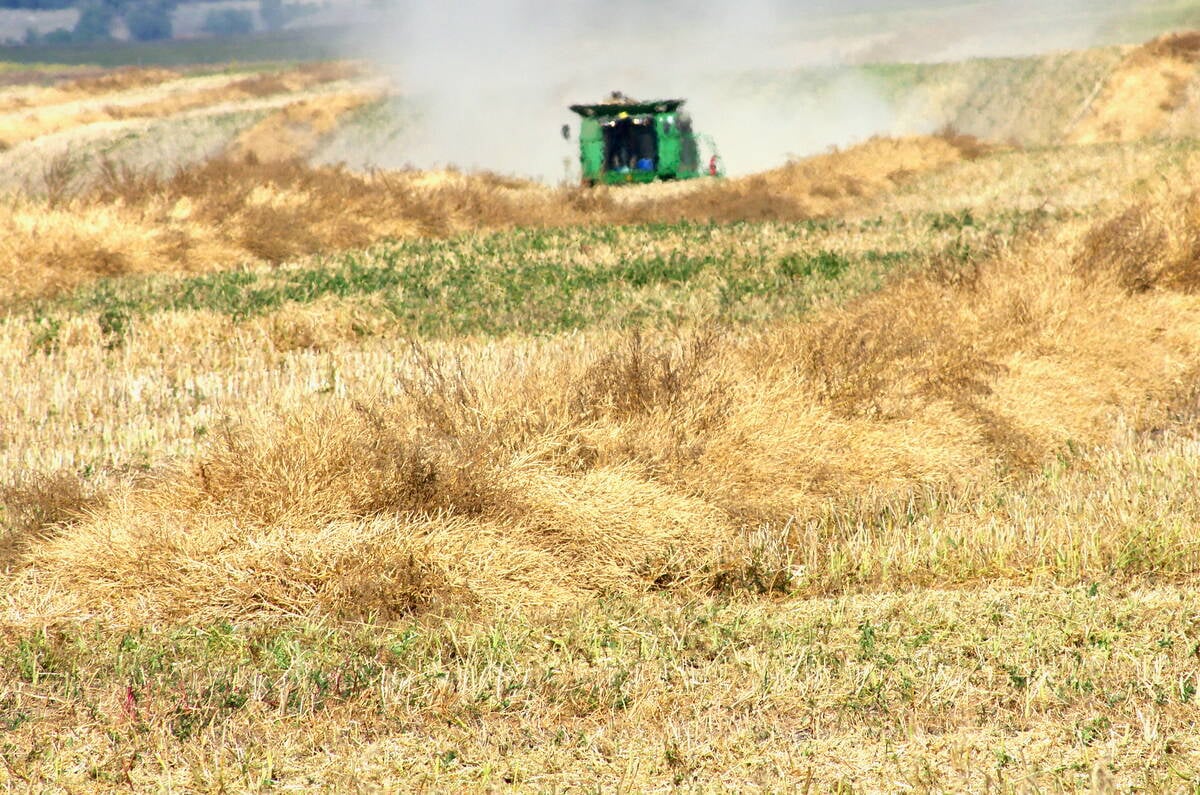PONOKA, Alta. – In his 46 years working as an auctioneer at the Vold, Jones and Vold Auction in Ponoka, Ed Karlo has never seen cattle prices so low.
A week earlier, he sold a Holstein cow for seven cents a pound and Holstein calves for $5 to $150 apiece.
“When I was a kid my dad told me during the depression they sold a cow for $10,” said Karlo shaking his head at the story.
While good cows are selling from 30 to 35 cents per lb., poor cows sell for 15 to 25 cents per lb. One old Holstein cow even sold for two cents per lb., not enough to cover the gas to bring the animal to town.
Read Also

Manitoba searches for Plan B on canola oil exports
A new report explores Manitoba’s current canola oil trade and possible alternative markets to the U.S.
Few people are shipping cattle unless they absolutely have to, said auction market owner Blair Vold.
“We tell them to keep them back in the pasture unless they’re really desperate,” said Vold.
Since the discovery of one cow with bovine spongiform encephalopathy May 20, the volume of cattle going to Prairie auctions has dropped drastically. Vold estimates cattle numbers are down 70 percent from normal at their weekly auctions. Many Prairie auction markets are not even open for business.
During the weekly July 3 sale at Ponoka, 538 cattle were sold, some from as far away as Manitoba to the east and Fort St. John, B.C. in the north.
“I just don’t believe in closing. There’s a lot of people out there that have to sell their cattle,” said Vold.
Mary and Peter Lundgard of Fairview, Alta., were among those people. Unlike the rest of the Prairies, their farm in northern Alberta has missed many of the rains. They shipped their cattle to Ponoka when the grass in their pasture ran out.
“We were really scared,” said Mary, about their decision to sell cows when prices were so low. They were worried they might only get $800 a piece for the animals.
They were pleasantly surprised with the price. Their 26 head of Black Angus cow-calf pairs averaged $1,140.
“We were very happy. We didn’t know what to expect.”
While cow prices were poor, the market was remarkably strong for young steers and heifers. Good feeder steers over 700 lb. ranged from $1.05 to $1.12 per lb. Steers weighing 500 lb. reached as high as $1.20 per lb.
Jim Haverslew of Vermilion wasn’t selling or buying cattle at the auction, just looking.
“I’m just watching and checking out the market,” said Haverslew, who wants to keep up to date with cattle prices and is thinking of options for his farm.
Jozef Taraba of Rimbey brought two 100-pound Holstein bull calves to sell despite the low prices.
“It’s better to get $100 now. We won’t get any more later,” said Taraba, who brings in a couple of calves each week.
Nick Kreutz of Wetaskiwin was one of the few people looking for cheap grass calves, but went home empty handed when the market was stronger than he anticipated.
The situation wasn’t as bright for sellers of fat cattle. The Calgary Public Stockyards cancelled its sale of 4,700 fat cattle July 3 because of a glut of the animals at the packers.
To qualify for the federal and provincial BSE support program, animals must be killed within 14 days of the sale date. Because packers have enough cattle bought for their plants, they couldn’t guarantee the cattle could be killed within the deadline.
Stockyard’s spokesperson Don Danard described the situation as a disaster.














